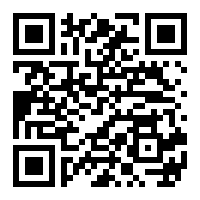Modification of Ghanaian traditional abatoɔ game to improve the quality of basic education
Main Article Content
Abstract
The study focused on using the traditional abatoɔ game as a pedagogical tool for teaching contents in different subject areas and to find out how it motivates learners to learn. The study adopted a qualitative research approach with action and descriptive research methods. It was underpinned by the ‘Game-Based Learning’ (GBL) theory. Artistic techniques such as drawing, painting, printing, and computer Graphics were employed to modify the Ghanaian traditional abatoɔ game to improve the quality of teaching and learning. The modified abatoɔ game was tested at M.A. Bediako Adventist Preparatory school, Amakom-Kumasi Ghana with a population of five hundred and eighty-seven (587) pupils. Out of this, purposive and convenience sampling techniques were used to select forty (40) basic one pupils, thirty-six (36) basic four pupils and thirty-nine (39) basic six pupils as sample for the study. Observation, tests, feedback cards, and opinionnaire were used to collect data for the study. The study revealed the possibility to modify traditional games into educational games with integration of different learning contents. The study concluded that, learning contents integrated into game reinforce learners’ understanding of learning concepts, motivate learners to learn and prepare in advance for studies. The modified abatoɔ game also have the potential of reducing the workload on teachers as different learning contents can be taught with a single game.
Downloads
Article Details

This work is licensed under a Creative Commons Attribution-NonCommercial-ShareAlike 4.0 International License.
This open-access article is distributed under a Creative Commons Attribution (CC-BY) 4.0 license.
You are free to: Share — copy and redistribute the material in any medium or format. Adapt — remix, transform, and build upon the material for any purpose, even commercially. The licensor cannot revoke these freedoms as long as you follow the license terms.
Under the following terms: Attribution — You must give appropriate credit, provide a link to the license, and indicate if changes were made. You may do so in any reasonable manner, but not in any way that suggests the licensor endorses you or your use.
No additional restrictions You may not apply legal terms or technological measures that legally restrict others from doing anything the license permits.
How to Cite

Share
References
Anthony D. P. & Kentaro, K. (2001). A Short-Term Longitudinal Study of Children's
Playground Games across the First Year of School: Implications for Social Competence and Adjustment to School. American Educational Research Journal, Vol. 39, No. 4 pp. 991-1015. Available at http://www.jstor.org/stable/3202452
Avedon, E. M., & Sutton-Smith, B. (1981). The study of games. New York, NY: John Wiley
& Sons, Inc.
Brutus (2009). Hopscotch origin. Available at http://www.streetplay.thegame.com
Caillois, R. (1961). Man, play, and games. New York, NY: Glencoe.
Campbell, D. M., & Harris, L. S. (2001). Collaborative theme building: How teachers write
an integrated curriculum. Boston: Allyn & Bacon.
Dewey, J. (2009). Training: Using games to embed learning. Available at
http://www.thetrainingworld.com/
El-Shamy, S. (2001). Training games: Everything you need to know about using games to
reinforce learning. Available at http://www.stylus.styluspub.com/
Garris, R., Ahlers, R., & Driskell, J. E. (2002). Games, motivation, and learning: A research
and practice model. Simulation & gaming, 33(4), 441-467. Available at http://sag.sagepub.com/content/33/4/441.full.pdf
Gee, J.P. (2003). What video games have to teach us about learning and literacy. New York,
NY: Palgrave Macmillan.
Huizinga, J. (1955). Homo Ludens. Boston, MA: The Beacon Press.
Isbister, K., & Schaffer, N. (2008). Game usability. New York, NY: Morgan Kaufmann.
Julie & Kar (2009). Hopscotch variations. Available: http://www.topic-mag.com
Keith & Kevin (1997). The importance of playing games with your preschooler: Building
skills while playing games. Available at http://www.familyeducation.org
Kinnerk, P., Harrey, S., MacDonncha, C., & Lyons, M., (2018). A review of the Game-Based
Approaches to coaching Literature in Competetive team Sports Setting. Available at www.researchgate.net.
Klopfer, E., Groff, S. J., & Haas, J., (2009). Using the Technology of Today, in the Classroom
Today: The Instructional Power of Digital Gaming and Social Networking and How Teachers Can Leverage It. Researchgate. Available at http://www.researchgate.net.
Lankford, M.D. (1992). Hopscotch around the world. Junior Books, New York.
Leigh, A. (2008). Games as Art, but at what cost. Available at http://www.kotaku.com/
Marri (2009). Hopscotch game. Available at http://www.topic-mag.com/
Mc Names, T. (2009). How to play hopscotch. Available at http://www.topic-mag.com/
Mead, K. (2011) Game-Based Learning and intrinsic Motivation. California State University,
Fullerton. IDT 520, Section 09
Perratta (2013). Game-Based Learning; Latest Evidence and Future Direction.
ResearchGate. Available at http://researchgate.net/publication/268445246
Prensky, M. (2001). Digital Game-based Learning (1 ed.). Two Penn Plaza, New York, NY
: McGraw Hill.
Rheanna, O. B. (2008), How To Play Hopscotch: Learn the Basic Rules. Available at
Rowe, M. W. (1992). Definition of Game. Cambridge University Press. Vol. 67, No. 262 (Oct.
, available at http://www.jstor.org/stable/3751702
Shaffer, D. W., Halverson, R., Squire, K. R., & Gee, J. P. (2005). Video games and the future
of learning (WCER Working Paper No. 2005-4). Madison: University of Wisconsin–Madison, Wisconsin Center for Education Research (NJ1).
Sluckin, A. (1981). Growing up in the Playground: The Social Development of Children.
London: Routledge & Kegan Paul.
Sportsknowhow (2020). Hopscotch Ball Court Dimensions. Available at
Sutton-Smith, B. (1973). The Folk games of children. Austin: University of Texas Press.
Van Eck, R. (2006). Digital game-based learning: It's not just the digital natives who are
restless. Educause Review, 41(2).
Watters & Carolyn (2005). Games genre evolution for educational games [On-line
abstract. Available at http://www.ir.lib.sfu.ca/





